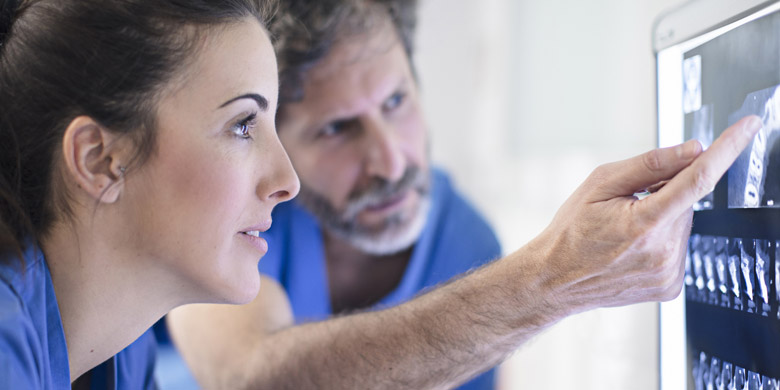
Using x-rays to produce images for diagnostic use in orthodontics, medicine and general dentistry provides an immense aid in identifying and preventing various health and dental issues. It is fairly well-known that radiation can pose health risks from repeated or excessive exposure. For some people the large equipment used to obtain radiographs (another term for ex-rays) can also be quite nerve-wracking.
It is reassuring to know that the sophisticated radiograph equipment allows for dental x-rays to be obtained at very low radiation exposure. A Certified Orthodontist receives thorough training in the science and techniques of dental radiography. This professional training has equipped an Orthodontist to maximize the benefits of the technology while minimizing risks to patients.
A clinical examination precedes dental radiographs to determine if, when and which radiographs are appropriate. Panoramic and cephalometric radiographs are the two most common radiographs used during orthodontic assessment and treatment.
A panoramic x-ray image is a great tool to view the ‘big picture’, allowing an Orthodontist to view and assess the teeth present or forming, overall health of the bone supporting the teeth as well as the jaw joints and other areas.
A cephalometric radiograph is a view of the jaws from the side. This aids in assessing how the upper and lower jaws and teeth relate to each other. This extra knowledge translates to a better understanding of orthodontic problems present and a supports a more predictable approach in managing them.
So, what is the radiation exposure level associated with these diagnostic radiographs? Comparing these exposure levels to those associated with daily events helps put them in perspective.
Every day we live on earth we are exposed to background radiation from different sources, the air we breath, the food we eat, the soil we walk on and taking commercial flights to name a few. It is estimated we are exposed to an average of 6-8 units of background radiation every day.
A panoramic radiograph amounts to up to 25 units of exposure while a cephalometric radiograph is associated with approximately 5 units.
If we compare x-rays to daily activities that result in some exposure, a panoramic radiograph is equivalent to approximately 3-4 days of natural background exposure or close to that associated with taking a cross-Canada flight. A cephalometric radiograph is equivalent to less than a day of natural background exposure.
In making these comparisons it is quite apparent that dental x-rays taken during orthodontic treatment account for a small proportion of the radiation exposure most people receive during the course of a year of relatively common activities. Even with that minimal exposure, a Certified Orthodontist will always aim to minimize use and obtain these x-rays only when there is a benefit.
Still have questions? Please feel free to contact a member of the Ottawa-Gatineau Orthodontists Alliance! We’re always here to help!
More like this


